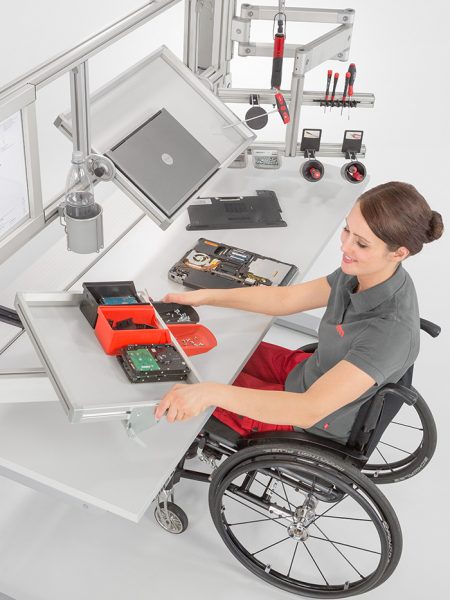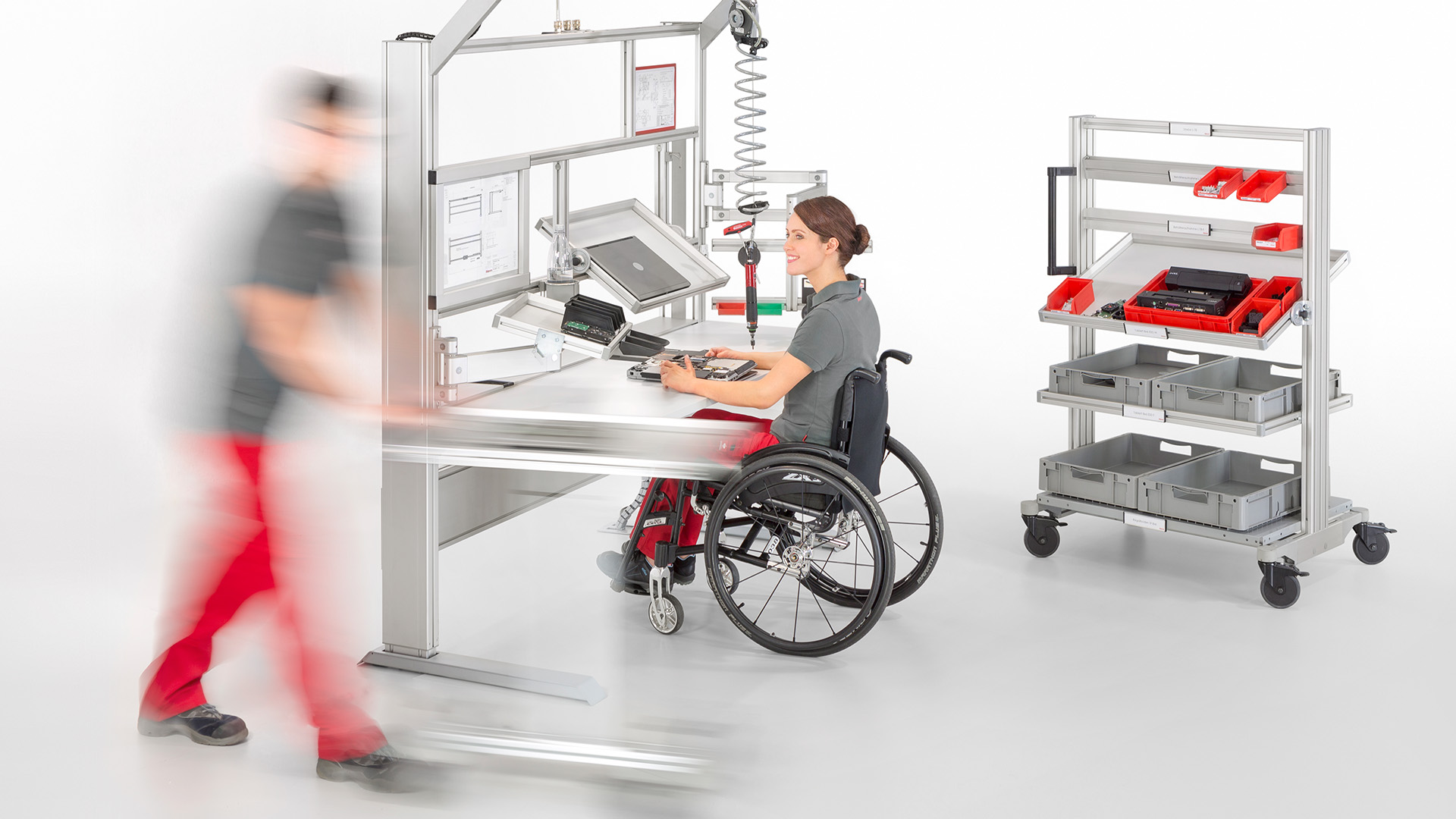Ergonomic work benches account for the fact that every employee has different physical characteristics. However, what do you do when these characteristics include physical disabilities?
This is where the barrier-free concept comes into play. Whether you’re talking about a building or a communications medium like a website, the concept is fundamentally the same – it’s about ensuring accessibility for all, regardless of age. When it comes to the world of work, this means there should ideally be no limitations on who can use a work bench, regardless of permanent physical limitations or age-related conditions. The following article sets out the criteria and benefits of barrier-free work benches.
Barrier-free design for the workplace

Here are a few examples of the kind of issues that need to be considered when setting up barrier-free work benches: Employees who are in a wheelchair or have difficulties walking or standing have a significantly restricted handling area. In most cases, they cannot stretch or bend to reach things that are any more than an arm’s length away. In the case of excessively large reaching distances, the torso also has to be moved to ensure the body is balanced, which makes reaching more difficult and increases the risk of stress-related back and shoulder complaints.
The height of employees is closely related to this. The optimum table and working height for women and men differs by an average of 125 millimetres. It is well known that height-adjustability is a decisive design factor for ergonomic work benches and it is even more important for their barrier-free counterparts. In basic terms, the following applies: A work bench that satisfies the stipulations in DIN 33 402 and DIN EN ISO 7250 is suitable for around 90 percent of the population.
Breaking down barriers – tapping into hidden talent
There are around 9.6 million people in Germany today who are living with a disability, 7.1 million of whom are seriously disabled. Unfortunately, despite the current scarcity of skilled workers, this section of the population is often overlooked. There is a clear misunderstanding as regards the potential that they offer. Indeed, young people with physical impairments often have excellent training and education – in many cases, much better qualifications than the average non-disabled person.
According to the German Federal Employment Agency, approximately 60 percent of severely disabled people who are unemployed have a vocational or academic qualification. Nonetheless, they are virtually excluded from the labour market. In other words, there is a talent out there that employers could harness with a barrier-free work bench system. Occasionally, all it takes to facilitate access to the workplace are a few modifications, such as special equipment or a ramp.

Benefits for companies
When companies decide to put in place barrier-free work benches and employ people with physical limitations, they are unlocking countless benefits. Firstly, they gain access to exceptionally well-trained and appreciative employees. In the long-term, they are taking positive steps to counteract the lack of skilled workers by expanding the pool of potential employees. What’s more, all the employees in their company can stay fit for work for longer. Companies that opt to break down barriers like this are thinking ahead and looking out for their future.
There are also added benefits for the company’s image. Businesses that adopt this approach can present themselves as attractive employers who are keenly interested in the wellbeing of their workforce and want to meet their responsibilities to wider society. Companies known for using barrier-free work benches also stand a better chance of securing public contracts. Operational processes and thus efficiency in general are also significantly improved by pursuing more ergonomic working practices. Moreover, companies in Germany can avoid having to pay the statutory financial contributions that are mandatory if they fail to meet their legal obligation to employ disabled workers. These mandatory contributions are based on the annual average number of jobs at the company.




